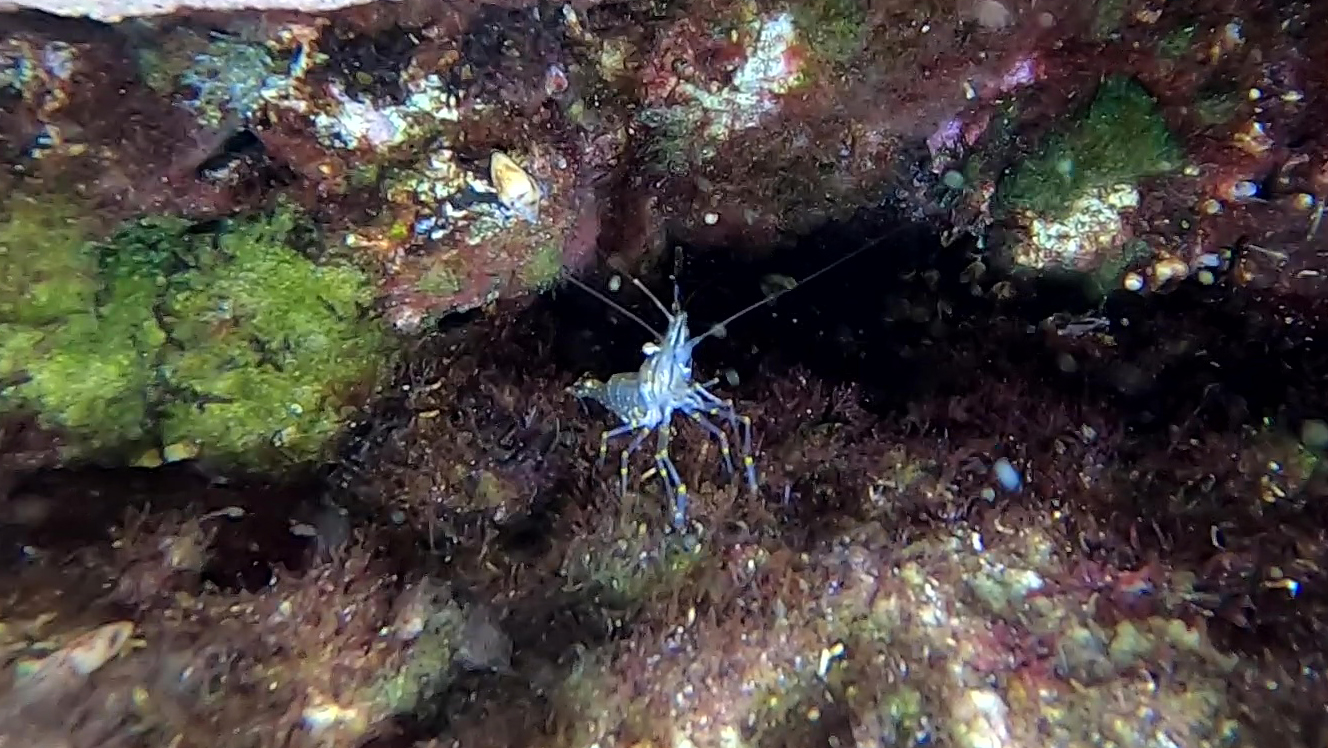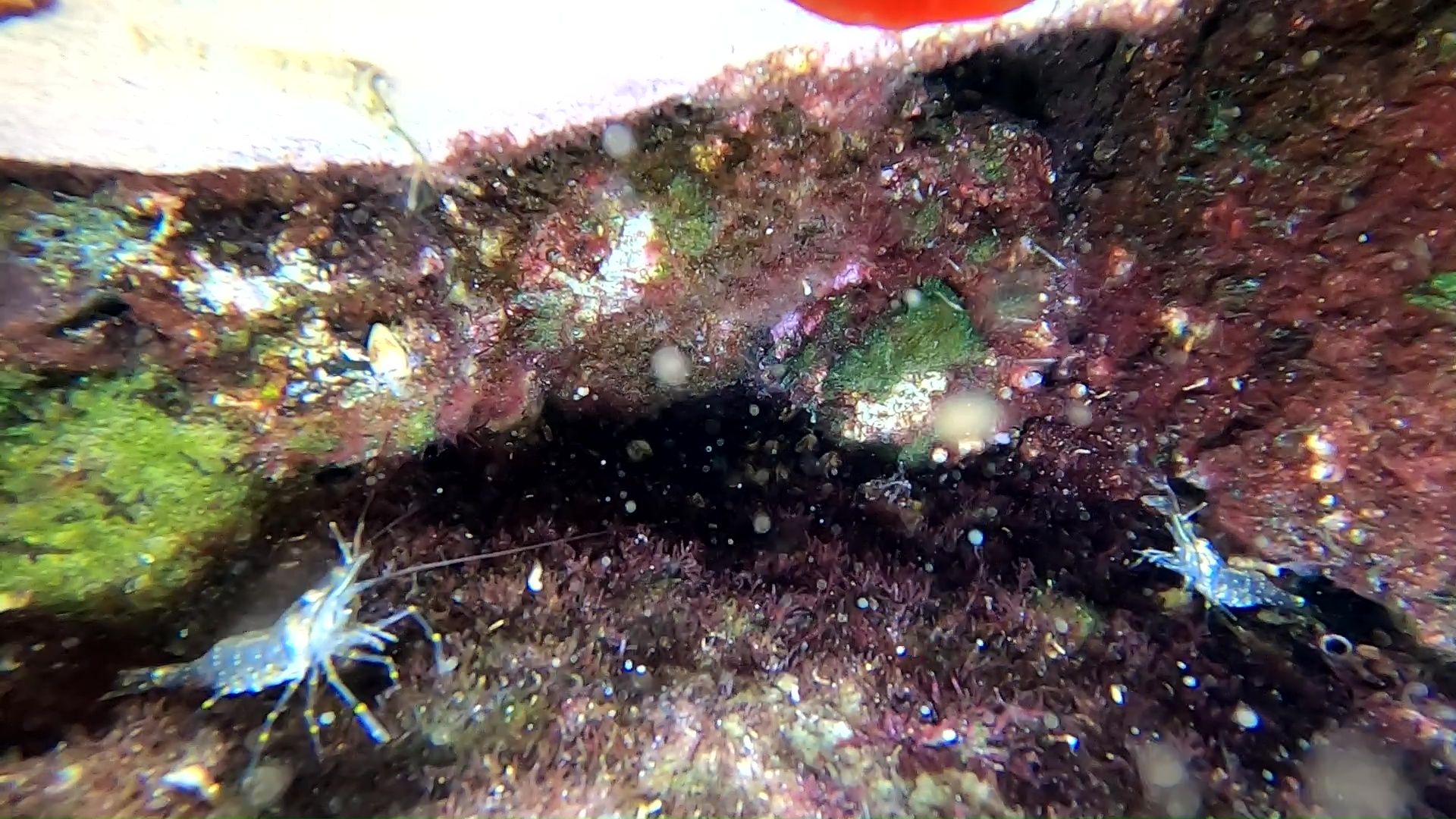Gamberetto maggiore - Palaemon serratus
Palaemon serratus is a decapod crustacean of the Palaemonidae family. Its vulgar name is greater shrimp, and it is one of the shrimp species that we find in the Mediterranean sea in tide pools and in the intertidal zone, that is, in the area between high and low tide.

It is easily confused with another very common species, Palaemon elegans, also easy to meet in the same habitat.
The two shrimps, although very similar, are however two totally different species, the Greater Shrimp, Palaemon serratus, lives mainly in caves and dark areas, is not very comfortable in the sunlight, while Palaemon elegans can be easily found in pools and areas well lit by sunlight or at most in the shade.
The other element of distinction is the rostrum or the teeth of the upper edge of the rostrum (7-8 in Palaemon serratus and 7-9 in Palaemon elegans), the teeth of the lower edge of the rostrum (5 in Palaemon serratus and 2-3 in Palaemon elegans); another element: Palaemon serratus always has the tip of the rostrum of a white-silvery color which makes it clearly visible while Palaemon elegans has a totally transparent rostrum.

In this case it is obviously difficult to be able to distinguish with certainty, if not for the fact of having found the shrimps in a completely dark cave, sheltered from sunlight.
Another important feature: Palaemon serratus has a much larger size than Palaemon elegans: the first reaches 12-13 cm while the second about 6 cm.
https://www.naturamediterraneo.com/forum/topic.asp?TOPIC_ID=159368

Palaemon serratus is a decapod crustacean of the Palaemonidae family. Its vulgar name is greater shrimp.
Distribution and habitat Common in the Atlantic Ocean from Denmark to Mauritania, and in the Mediterranean Sea, and Black Sea found on rocky bottoms and rich in algae up to about 15 meters deep.
Description Up to 10-15 centimeters. Palaemon serratus can be distinguished from other shrimp species by the rostrum, which is curved upward, forks at the tip and has 6-7 teeth along its upper edge, and 4-5 teeth on the lower edge.
Reproduction The female holds the eggs between her abdominal appendages until they hatch. Tiny larvae emerge and spend a long existence in full water, undergoing several stages of moulting before assuming the characteristic shape of the adult shrimp.
https://it.wikipedia.org/wiki/Palaemon_serratus
https://en.wikipedia.org/wiki/Palaemon_serratus
Gallery
https://www.intotheblue.it/2021/08/27/common-prawn-palaemon-serratus/
